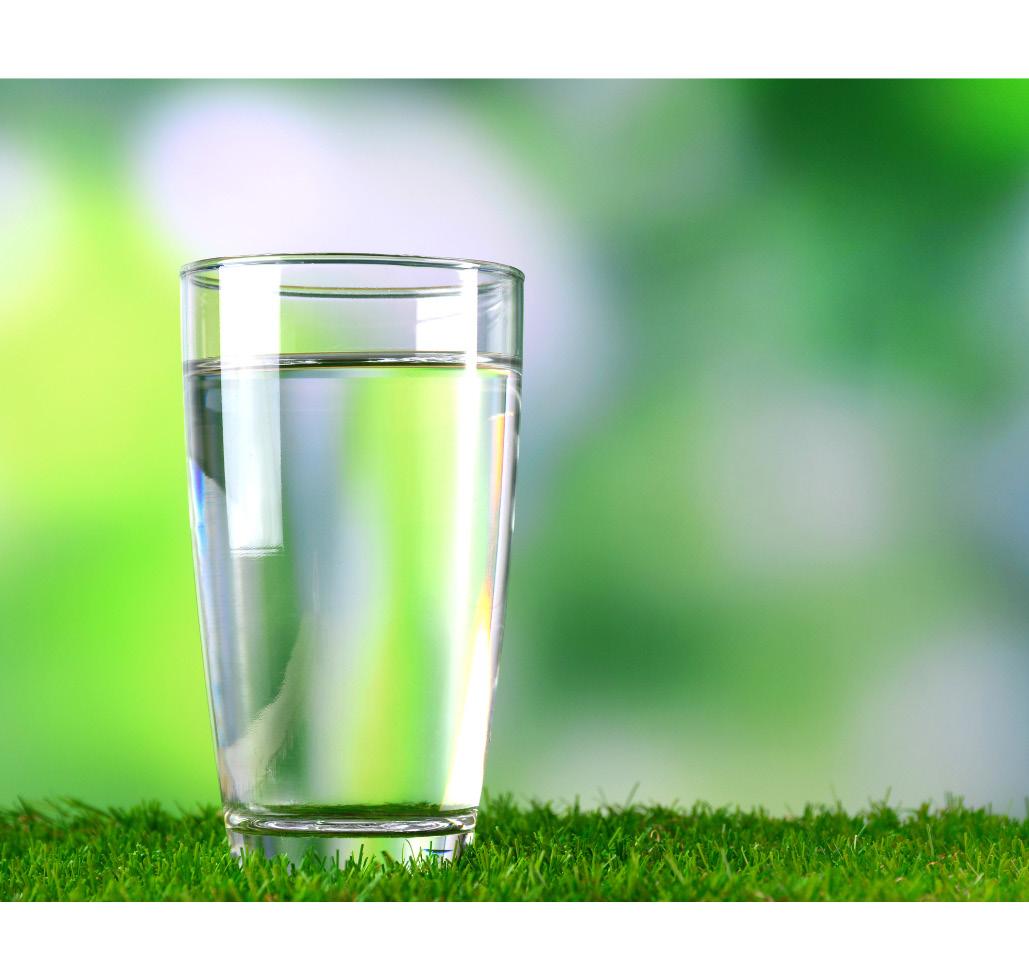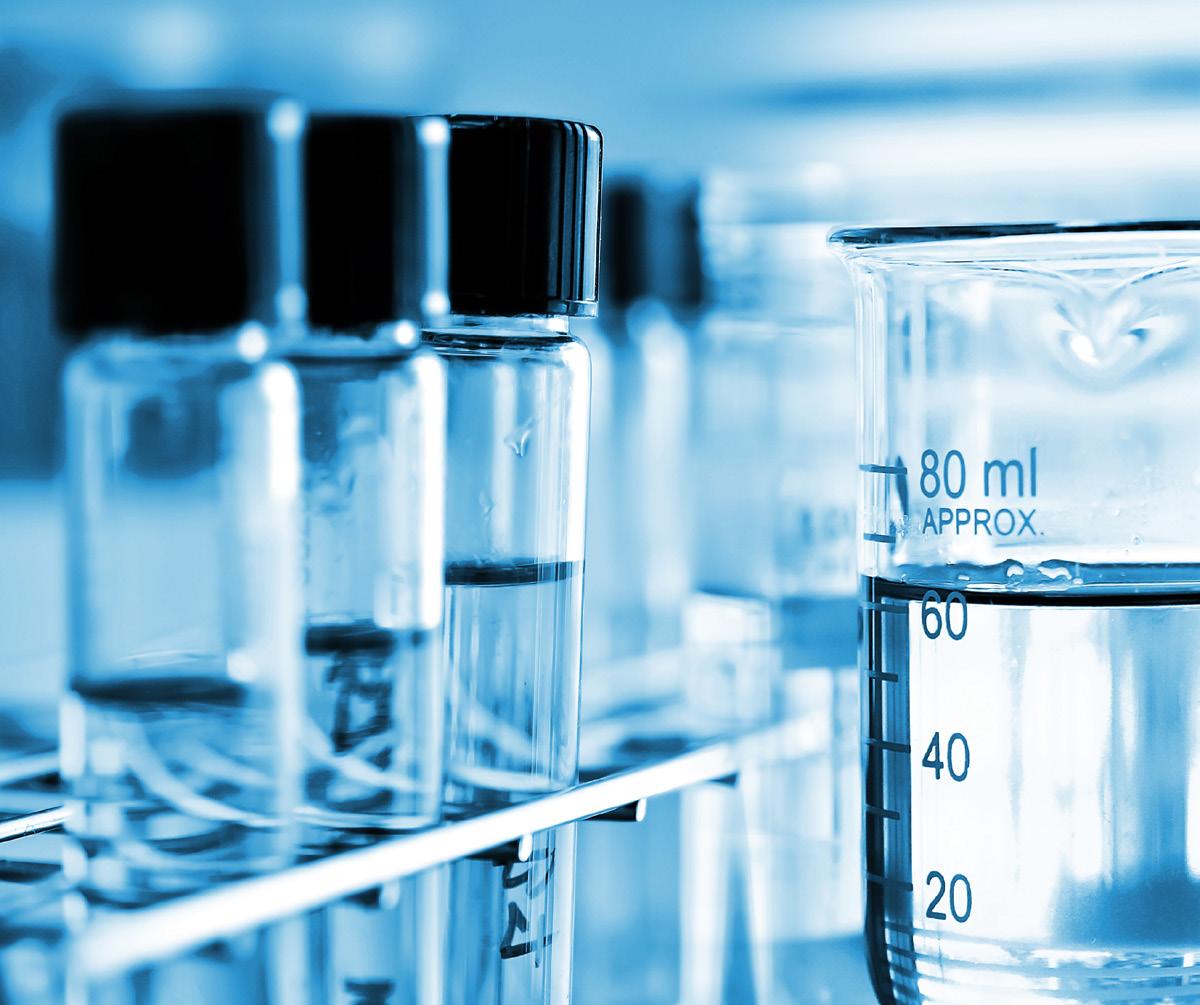
4 minute read
2023 Water Quality Report
Testing Your Water
In order to ensure that tap water is safe to drink, the Environmental Protection Agency (EPA) prescribes regulations which limit the amount of certain contaminants in water provided by public water systems. That informaton is provided in the data charts on pages for each water system.
Food and Drug Administration regulations establish limits for contaminants in bottled water which must provide the same protection for public health. All drinking water, including bottled drinking water, may reasonably be expected to contain at least small amounts of some contaminants. The presence of contaminants does not necessarily indicate that water poses a health risk.
More information about drinking water is available through these sources
Virginia Department of Health: (Roanoke & Botetourt area)
540.463.7136
Virginia Department of Health: (Franklin County)
434.836.8416
Center for Disease Control and Prevention:
1.800.311.3435 404.639.3311 or 404.639.3312 (TTY)
Roanoke Environmental Health Department: 540.857.7663
EPA Safe Drinking Water Hotline: 800.426.4791
How are the Standards Set?
The U.S. Environmental Protection Agency (EPA) sets maximum contaminant levels (MCLs) at very stringent levels. In developing the standards, EPA assumes that the average adult drinks 2 liters of water each day throughout a 70-year life span. EPA generally sets MCLs at levels that will result in no adverse health effects for some contaminants or a one-in-ten-thousand to one-in-one-million chance of having the described health effect for other contaminants.
The tables of data on pages 10 - 43 summarize water-testing results from 2022 or the most recent reporting year for both regulated and non-regulated substances. Many other primary and secondary contaminants have been analyzed but were either below the instrument’s detection limits or below the MCLs.
There is no State or Federal MCL for sodium. Monitoring is required to provide information to consumers and health officials that are concerned about sodium intake due to dietary restrictions. The EPA recommended optimal level of sodium is less than 20 ppm, established for people on a “strict” sodium intake diet. The amount of sodium detected in each water system is listed in the data charts.
The Western Virginia Water Authority constantly monitors its water supplies for various contaminants to meet all regulatory requirements. All regulated substances must be tested annually (or triennially) for small systems) except for lead and copper and SOCs, which must be tested every three years, and radiologicals, which must be tested every six to nine years. The TTHMs/HAA5s were derived from running annual averages.
Cryptosporidium and Giardia
Cryptosporidium and Giardia are microscopic organisms that can cause fever, diarrhea and other gastrointestinal symptoms when ingested. The organisms come from animal and human wastes and are eliminated through water filtration and disinfection. Even though the presence of these organisms is not regulated by the state or federal government, the Water Authority has tested for these organisms.
Some people may be more vulnerable to contaminants in drinking water than the general population. Immuno-compromised persons, such as persons with cancer undergoing chemotherapy, persons who have undergone organ transplants, people with HIV/AIDS or other immune system disorders, some elderly, and infants can be particularly at risk from infections. These people should seek advice about drinking water from their health care providers. EPA/CDC guidelines on appropriate means to lessen the risk of infection by Cryptosporidium and other microbiological contaminants are available from the Safe Drinking Water Hotline (800-426-4791).
What Causes Discolored Water?
Changes in water pressure in water systems, such as when water mains break or fire hydrants are used or flushed, can occasionally cause drinking water to be discolored. The discoloration is caused by sediments in pipes mixing with clear water. The sediments occur naturally from the oxidation of iron in pipes.
While discolored water is ordinarily safe to drink, it is best to flush any discolored water from pipes by turning on all cold-water faucets in your home or business. Avoid turning on hot-water faucets so the discolored water is not drawn into water heaters.
If you notice evidence of a water main break or leaking fire hydrant, please call 540.853.5700.
Lead and Copper Testing
Quality water begins at the source. It is important that the Western Virginia Water Authority knows and understands the water chemistry from each source, closely monitors the treatment process and understands the pipe material that the water can flow through. This is especially important regarding lead and copper.
Copper is a nutritionally essential element, but at high levels, copper can cause gastrointestinal difficulties such as nausea and diarrhea. Elevated levels of lead, if present, can cause serious health problems, especially for pregnant women and young children. Lead in drinking water is primarily associated with materials and components in service lines and home plumbing.
The Authority maintains over 1,200 miles of pipes up to and including the lines going to the customer’s water meter. Pipe materials in our system can be cast iron, ductile iron or pvc. We do not know of any lead pipes in our distribution system. However, customers, particularly those in older homes, may have lead plumbing in their homes or pipes that were joined with lead solder.
We treat the water with corrosion control or adjust the pH of the water so that pipes in our distribution system and the customers’ pipes in their homes are protected.
The Western Virginia Water Authority is responsible for providing high quality drinking water but cannot control the variety of materials used in plumbing components. When your water has been sitting in your pipes for several hours, you can minimize the potential for lead exposure by flushing your tap for 30 seconds to 2 minutes or until it becomes cold or reaches a steady temperature before using water for drinking or cooking. If you are concerned about lead in your water, you may wish to have your water tested.
Information on lead in drinking water, testing methods and steps you can take to minimize exposure is available from the Safe Drinking Water Hotline or at http://www.epa.gov/safewater/lead.
What is my Water Hardness?
As water naturally flows over rocks and through the soil, it picks up minerals. The more calcium and magnesium present, the harder your water. While water hardness is not a safety issue, you may notice increased mineral build-up or soap residue with harder water. Hardness can be expressed as PPM - parts per million or GPG - grains per gallon.









